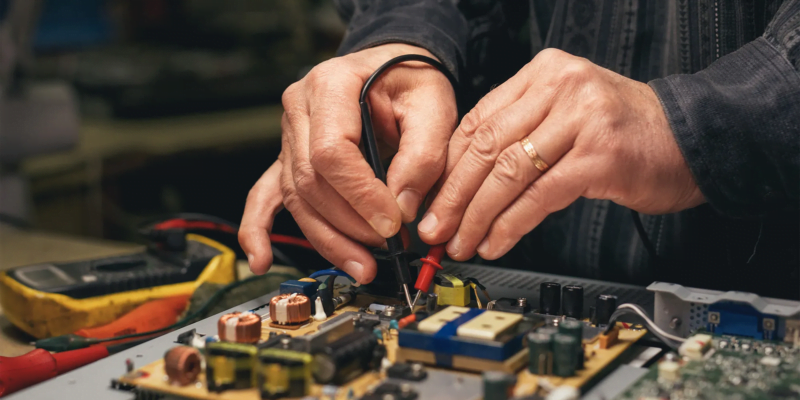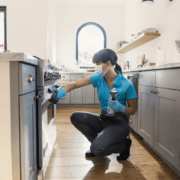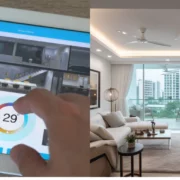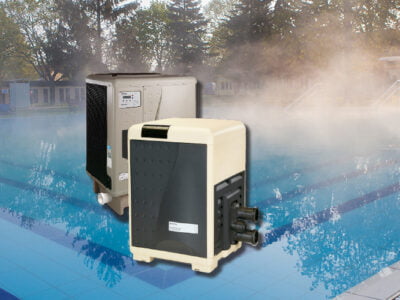Flickering lights, malfunctioning switches, or mysteriously dead outlets mean trouble to electronic appliances. Such electrical woes to the appliances can be a major inconvenience, but with the right knowledge and a little bit of troubleshooting, one can easily fix those pesky electrical problems. A majority of issues have a set of basic underlying problems. Understanding these basic issues can be a key to fixing them. However, make sure you follow safety standards and procedures while conducting your troubleshooting routine. Even though many problems can be fixed by yourself, it is always recommended to consult a licensed electrician to ensure complete safety and troubleshooting procedures. Should you choose to take matters into your own hands, these tips might be handy.
Basic tools for troubleshooting home appliances
No troubleshooting can be carried out without proper tools. Here are some handy tools that you might need to carry out the deed with ease.
Multimeter:
This handy device lets you measure voltage, current, and resistance in electrical circuits. With a multimeter, you can determine if there’s an issue with the power supply or wiring in your appliance.
Circuit tester:
Another important tool is a circuit tester. This device helps you identify whether an electrical outlet is properly grounded or if there’s a fault in the wiring. By using a circuit tester, you can pinpoint any potential problems with the electrical connection of your appliance.
Screwdrivers:
A set of screwdrivers is also crucial for troubleshooting home appliances. Different appliances require different types of screws, so having a variety of screwdrivers – both flathead and Phillips – will ensure that you’re prepared for any repair job.
Wires and pliers:
Wire strippers and pliers are handy tools to have when working on home appliances. Wire strippers allow you to remove insulation from wires without damaging them, while pliers can be used for gripping and bending wires during repairs.
Safety equipment:
Don’t forget about safety equipment such as gloves and safety glasses. These items protect against electric shocks and flying debris during repairs.
How to fix electrical problems step by step?
1. Check the AC supply voltage:
Checking the AC supply voltage is an important step in troubleshooting electrical problems in home appliances. The voltage level plays a crucial role in determining whether the appliance will function properly or not. To check the AC supply voltage, you can use a multimeter or a voltmeter. Make sure to turn off the power to the appliance before performing any tests. Start by locating the power source and identifying which wires are connected to it. Once you have identified the correct wires, set your multimeter or voltmeter to measure AC voltage and connect its probes to the respective wires. The meter should display a reading close to the expected voltage level for your region (e.g., 120V or 240V). If the reading is significantly lower than expected, there may be an issue with your electrical system or wiring that is affecting multiple appliances. If the reading is within range but you’re still experiencing problems with your appliance, then there may be another issue specific to that device that requires further investigation.
2. Checking the power cord:
One common electrical issue that can occur in home appliances is a faulty power cord. A damaged or frayed power cord can not only affect the performance of your appliance but also pose a safety hazard. That’s why it’s important to check and inspect the power cords of your appliances regularly. To begin, unplug the appliance from the electrical outlet before examining the power cord. Inspect the entire length of the cord for any visible signs of damage, such as cuts, breaks, or exposed wires. If you spot any issues, it’s crucial to replace the power cord immediately rather than attempting to repair it yourself. Gently wiggle and move both ends of the power cord where they connect to the appliance and electrical outlet. Loose connections can cause intermittent electrical problems or prevent proper power flow to your device. Make sure that there are no knots or tangles in the power cord, as this can strain and weaken its internal wiring over time. Straightening out any twists or loops will help ensure a consistent flow of electricity.
3. Checking switches:
When it comes to troubleshooting electrical problems in home appliances, one important step is to check the switches. Faulty switches can often be the culprit behind malfunctioning appliances. Make sure that the appliance is unplugged and disconnected from any power source. Safety should always be a priority when dealing with electricity. Visually inspect the switch for any visible damage or loose connections. Sometimes, a simple loose wire can cause issues with the functionality of the switch. If everything looks fine on visual inspection, you can use a multimeter to test the continuity of the switch. Set your multimeter to measure resistance and touch its probes to each terminal of the switch while it is in both ON and OFF positions. A good working switch will show low resistance in the ON position and high resistance in the OFF position.
4. Check the current draw:
When it comes to troubleshooting electrical problems in your home appliances, checking the current draw is an important step. This helps you determine if there are any issues with the electrical circuit or the appliance itself. To check the current draw, you will need a multimeter or a clamp meter, which comes equipped with a built-in current sensor. Start by unplugging the appliance from the power source and opening up its casing. Locate the wires that connect to the motor or heating element. Set your multimeter to measure amps and attach its probes to these wires. Make sure they have a good connection for accurate readings. Now, plug in your appliance and turn it on while monitoring the meter. If the current draw is significantly higher than what is specified for your appliance, this could indicate an underlying problem, such as a malfunctioning motor or a short circuit. On the other hand, if there is no reading at all, it may be due to a faulty switch or wiring issue.
In this step-by-step repair guide, we have discussed some common electrical problems that may occur in your home appliances. While it can be tempting to try and fix these issues on your own, it’s important to remember the importance of safety and the potential risks involved. To ensure the best outcome and avoid any further damage or accidents, it is always recommended to seek professional help from a licensed electrician for major electrical repairs. They have the knowledge, expertise, and tools needed to diagnose and fix electrical issues while prioritizing safety accurately.










Comments